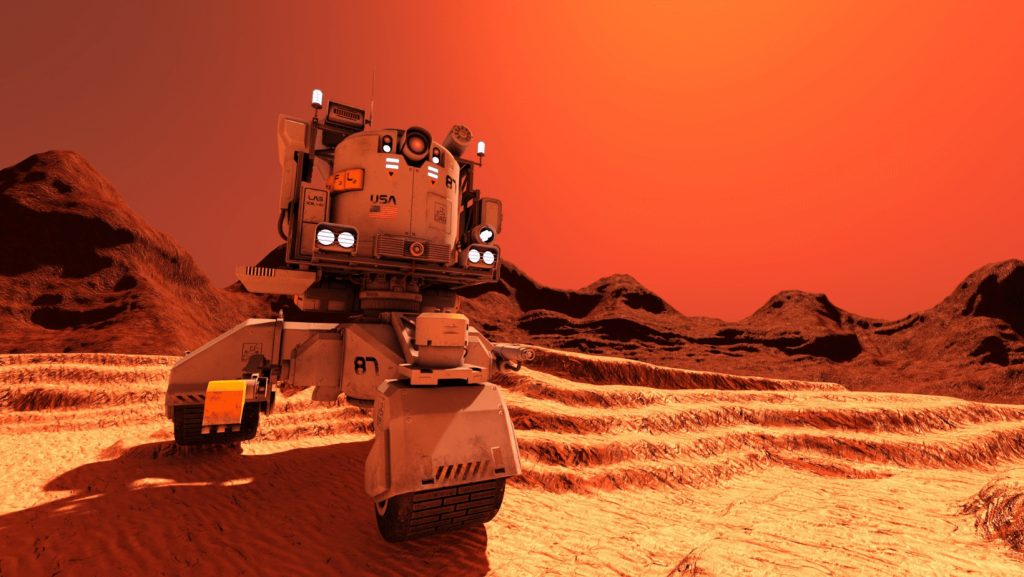
Mars Basics
Also known as the “Red Planet,” the Romans named Mars after their god of war because its color was reminiscent of blood. Historically, other civilizations have also named the planet for its distinctive hue. For example, the Egyptians called it “Her Desher,” which means “the red one.” Many of the rocks on Mars are rich in iron and when they’re exposed to the elements they oxidize – or rust – which has given the planet its signature color.
With a radius of 2,106 miles, Mars is the second smallest planet in our solar system, following only Mercury. That means it’s roughly half the size of Earth. But despite their difference in size, there are some interesting similarities between the two planets. For example, Mars completes one rotation every 24.6 hours, so the length of a day is close to that of a day on Earth (23.9 hours).
Mars’ axis of rotation is tilted 25 degrees relative to the plane of its orbit around the sun. This is another similarity with Earth, which has an axial tilt of 23.4 degrees. Because the planet is tilted, it also experiences “seasons.” But since it’s both slower and farther from the sun than Earth, both its years and seasons last longer. The longest season on Mars is spring in the northern hemisphere (autumn in the southern hemisphere), which lasts roughly 194 solar days.

Distinct Features
The surface of Mars is home to some of the solar system’s most interesting topographical features. One such feature is a massive canyon system called Valles Marineris. The Martian canyon stretches about 3,000 miles long and is up to 200 miles wide and 4.3 miles deep. This makes it about 10 times as large as the Earth’s Grand Canyon.
The planet also boasts the largest volcano in the solar system, Olympus Mons. Olympus Mons has a diameter of 374 miles, making it roughly the size of New Mexico. It’s a massive feature, standing three times taller than Mt. Everest, the highest point on Earth. One reason such large volcanoes are able to form on Mars is due to the planet’s stationary crust. By contrast, the Earth’s crust moves, which causes lava flows to form multiple smaller land formations.
In addition to its surface features, the planet also has two moons, Phobos and Deimos. The moons are named for the horses that pulled the chariot of the Greek god of war, Ares. Because the moons have too little mass for gravity to make them spherical, they’re described as potato-shaped. The larger of the two moons, Phobos, is slowly drifting towards Mars and will either crash into the planet or break apart in about 50 million years.

Missions to Mars
Since the 1960s, dozens of spacecraft have been sent to study Mars. Early missions focused on flybys, capturing photos as they passed. As more recent missions have shown, landing on the planet is a tricky feat. The thin Martian atmosphere makes descent difficult and 60% of landing attempts have failed.
In 1976, NASA’s Viking 1 and 2 became the first spacecraft to successfully operate on the surface of Mars. NASA’s Mars Pathfinder mission, launched in 1996, was another landmark for exploration. This placed the first free-moving rover, Sojourner, on the planet. The rovers Spirit and Opportunity followed later, exploring the planet for far longer than expected. They returned over 100,000 images before dust storms destroyed their solar panels in the 2010s.
So far, the United States has had the most successful landings on Mars, with a total of nine. For several decades, the only other country that had managed successful landings was the Soviet Union, with touchdowns in 1971 and 1973. However, in 2021, China became the third country to successfully land a spacecraft on the planet.
Weekly Trivia
Click on the question below to reveal the answer.
